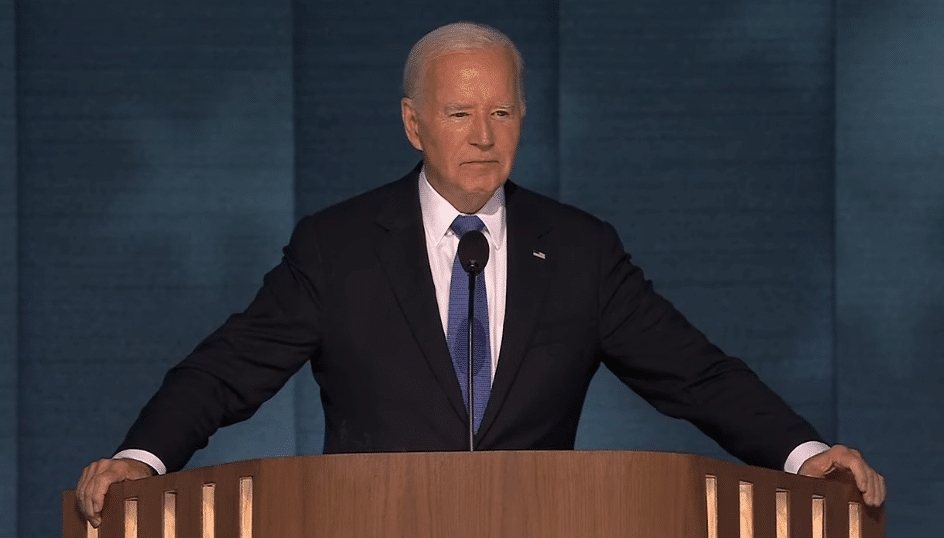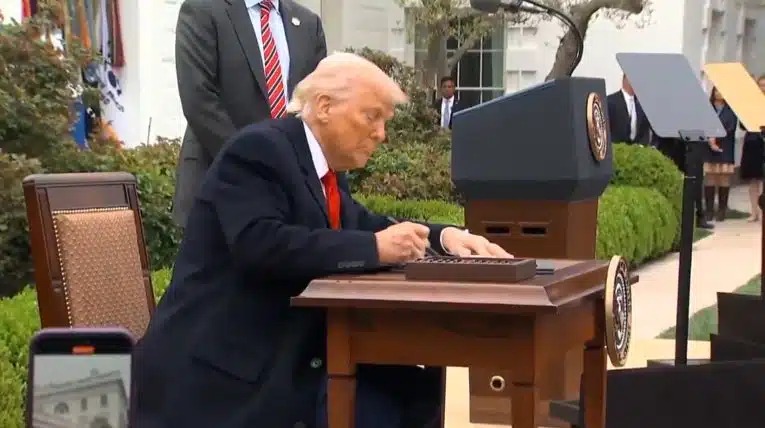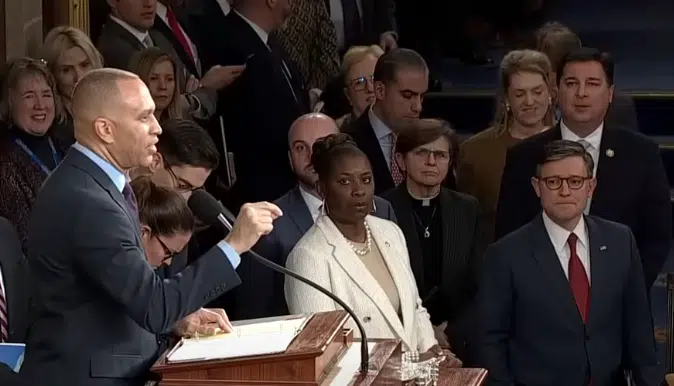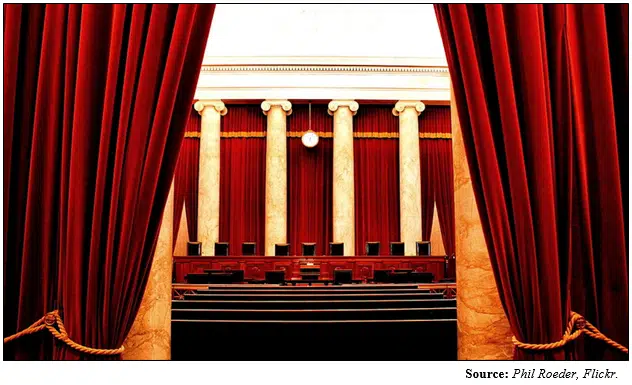“Wages up, inflation down, way down and continuing to go down.”
That was President Joe Biden in his political farewell address to Democrats assembled in Chicago, Ill. for the Democratic National Convention on Aug. 20 that is nominating Vice President Kamala Harris as the party’s nominee, touting in part his administration’s economic record since taking office in Jan. 2021.
Here, Biden wants to say that, yes, there has been inflation since he took office, but it’s “way down” now and “wages [are] up”.
There’s just one problem. Consumer inflation has far outpaced nominal wages, whether hourly or weekly, and nominal personal incomes by every measure. There’s no question about it.
Since Feb. 2021, consumer inflation as measured by the Bureau of Labor Statistics (BLS) has increased by a whopping 18.95 percent, or an average 5.2 percent a year, for all categories including food, energy and shelter, things that no household can go without.
In the meantime, median nominal weekly earnings measured by BLS for wage and salary workers have not kept up with the spiraling prices, only up 17.1 percent to $1,151.
Nor have average nominal hourly wages kept up, which are only up 17.17 percent to the current $35.07.
And personal incomes, which includes government transfer payments, have not kept up either, and are only up 18.2 percent to $23,948.
By every measure, the American people are no better off than they were four years ago, and are actually worse off than when Biden and Harris came into office on the economic issue that matters the most: their financial freedom and independence.
In contrast, overall consumer inflation between Feb. 2017 and Dec. 2020 was 7.37 percent, or an average of 1.9 percent a year, when former President Donald Trump was in office.
And wages more than kept up, they were well ahead, with median nominal weekly earnings up 14.56 percent.
Similarly, overall average hourly wages were well ahead of inflation at 15 percent through Trump’s term of office.
And personal incomes were up 15.66 percent. By every measure, economically and in their financial positions, the American people were far better off at the end of 2020 from when Trump took office.
In the meantime, interest rates were much lower, for example, the 30-year mortgage interest rate was just 2.65 percent when Trump left office while today it is 6.49 percent, more than double.
What hurt Trump in 2020 were factors largely beyond his control or as a function of policy per se, but were dependent on the once in a century Covid pandemic that temporarily saw 25 millions jobs lost in the BLS household survey’s employment level. But the Federal Reserve temporarily took interest rates to near-zero percent and engaged in quantitative easing, while Congress acted on a bipartisan basis to pass the $2.2 trillion CARES Act that included measures to shore up small businesses during the lockdowns, and by the end of 2020, more than 16 million of the 25 millions jobs lost had already been recovered.
That was more than enough stimulus, but Biden and Harris wanted to keep going, and so the Fed kept interest rates at near-zero percent for too long and continued purchasing treasuries and mortgage-backed securities, meanwhile, on a partisan basis, Democrats in Congress, passed the $1.9 trillion American Rescue Plan for even more helicopter money and then another $891 billion of green subsidies in the so-called Inflation Reduction Act.
By the end of Biden and Harris’ first year in office, inflation had risen from 1.4 percent in Jan. 2021 to a whopping 7.5 percent by Jan. 2022 before Russia had ever invaded Ukraine. By then, the damage was already done, and there was simply no way American households would be able to keep up with the inflation onslaught.
Now, even as the rate of inflation has cooled, wages and incomes still have not caught up, but consumer credit growth has slowed to just a trickle as the economy overheated, and now unemployment is once again up by almost 1.5 million since its low in Dec. 2022. It’s moving in the wrong direction.
It’s the reason the 2024 election is close at all and the incumbent Democrats are not walking away with it. It’s the reason why Biden was trailing Trump in the majority of national and battleground state polls taken between them, and ultimately, is the true reason by Biden was asked to stand aside in the presidential race. The hope is that Harris will inherit the incumbency advantage without the incumbent’s record.
But it usually doesn’t work that way. Elections are almost always a referendum on the current ruling party, regardless of who the nominee is.
Biden said with an almost straight face to the American people, “America is more prosperous… today than under Donald Trump.” But American households know that’s not true, and in November, all window dressing aside, it might not just be Joe Biden who is losing his job as Kamala Harris may indeed be judged as the incumbent when the American people go to the polls. Stay tuned.
Correction: The 7.37 percent measured inflation mentioned above was from Feb. 2017 to Dec. 2020.
Robert Romano is the Vice President of Public Policy at Americans for Limited Government Foundation.







